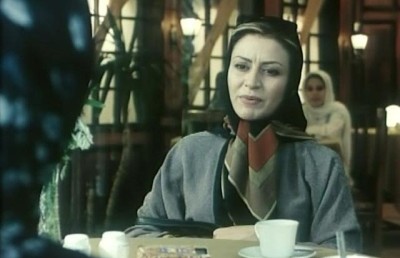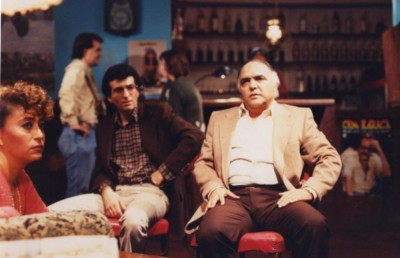Bye-Bye Celluloid?
Are we Seeing the Dawn of a New Digital Era?

I read two items within a few days that truly brought home that the end of film, that is celluloid, is well and truly upon us. The first was a letter posted on Roger Ebert’s blog written from Twentieth Century Fox not too subtly telling those theatres who have not yet converted to digital to do so quickly or risk going the way of the dodo bird (i.e. not being in the position of receiving new films). Essentially, they said that in 2012 they will stop sending out 35mm prints so if they aren’t digitally equipped, they won’t have anything new to program. A form of economic blackmail? The second item was Tim Lucas’ editorial in Video Watchdog #165 relaying information he gleamed from the excellent online insider media website Creative Cow, in Debra Kaufman’s article “Film Fading to Black” that the major makers of 35mm camera, ARRI, Panavision and Aaton will cease production in 2012. Top that off with the every shrinking world of post production houses that develop 35mm and you have a future scenario where new films could only be made digitally. All of this seems inevitable, although there will always be the counter-movement of dedicated people who will push against the flow and forge ahead with film, as we saw with analog vs. digital music and the return of the LP (wax) record. Smaller companies (like LomoKino which makes a 35mm film camera for under $200.00) will continue to make cameras, and 35mm film stock will most likely continue to be made in North America as long as there is some profit to be made. Plus, even though Panavision will cease to make NEW 35mm cameras they still have hundreds for rental. Major studios see the digital revolution largely as a way to save costs: no more prints means no more expensive and heavy 35mm answer prints to be made and mailed: big savings on postage costs (1 billion a year according to Debra Kaufman in the article “Film Fading to Black”). The ultimate streamlined method will be transmitting films electronically, but the studios still fear the hackers that could intervene and steal films before they hit the screens. Hence for the time being studios seem to be opting to still send their movie, through the DCP (digital cinema package), which is essentially a hard-drive that carries the film and is connected to the digital projection system, and then unlocked through a labyrinthine password code system. But a feasible answer remains: will there ever be a time when security for straight peer-to-theatre streaming will be 100% secure? Will the studios be able to stay one step ahead of the world’s greatest computer geek hackers?
The death of film and victory of digital has dozens of consequences and talking points. In this brief discussion I will break them down into three areas: Aesthetic Issues, Environmental Issues and Preservation Issues.
Aesthetic IssuesThe shift to digital will have dramatic consequences on the art of cinematography, to the extent that the definition of what a cinematographer does, their “job profile,” will change. I watched Crank on BD recently and this was spelled out clearly by a producer on the Crank Bluray special feature, “Shooting Crank,” when he said that the main advantage with digital is that you have “in effect, your laboratory on set. You have a digital image technician….who is able to adjust the aperture, the color, the crispness, 15 different axis of adjustments to the image, on the fly….” In other words, much of the onus on a film’s visual look and style can potentially shift from the cinematographer, to the onset digital image engineer, who is more of a computer software person than filmmaker. The old school cinematographer used to have to know about color temperature, the different properties of a film stock and lenses, lighting technology, color theory, and to some extent post-production laboratory processes. Most of these qualities can now be implemented on set by the digital image engineer, making the cinematographer a middle person or a useful accomplice who, basically, has to make sure the image is in focus and properly framed. Everything else can be handled by the digital guy. This is somewhat of an exaggeration, but as the digital revolution takes hold completely, I foresee this becoming more the norm. The credit of the digital image engineer will be right up there along with if not before, the cinematographer’s credit line. Hence the days of the greatly skilled artists, connoisseurs of painting and color theory, the Vittorio Storaro’s, Gordon Willis’, Haskell Wexler’s, Carlo Di Palma’s, Sven Nykvist’s of the world will be a thing of the past. In terms of the postproduction aspect, Paolo Cherci Usai, Senior Curator of Film at George Eastman House and Curator Emeritus of the National Film and Sound Archive of Australia, the Cineaste Film Preservation Symposium, writes, “The expertise required for photochemical grading will soon be compared to the craftsmanship involved in making an eighteenth-century musical instrument according to its original design. Specialists in this kind of skill are regarded as survivors of a bygone era, quietly reaching their age of retirement. Little or no succession plan is in place for them. The few who are equally fluent in digital and photochemical grading are beginning to enjoy the status of laboratory superstars.”
Another aesthetic issue is the whole idea of real time and the era of the great long take practitioners. What was once a brilliant technical achievement as well as aesthetic and stylistic is now easily attainable, at least from the technical and practical standpoint. In the pre-digital era the length of a take was conditioned by the film magazine that was loaded into the 35mm film camera. Unless the standard film magazine/film camera take up was altered, this limit was ten minutes. At which point the operator would have to change the film magazine. Any time a director wanted to go longer than this for an individual shot (which was actually quite rare), the director would have to come up with ways to disguise the end of the camera magazine within the set or through a hidden edit. Hitchcock’s Rope was one of the greatest examples of this, and years later, a redux of sorts was achieved by Josh Brecker’s Running Times and Maurice Deveraux’s Slashers. But now there is no such limitation of camera magazine. The only limitation is one of data storage, which is easily surpassed, as Sokurov did with his single take film, Russia Ark. However, the same logistical problems exist with a digital camera (although there too, the fact that most digital cameras are smaller and lighter is a plus) in terms of blocking the space, the actor potentially having to memorize longer passages of dialogue, the lighting, etc. As there is an asterisk in front of some sports records to denote how a record was factored by historical context (like next to Roger Maris’ 61 home runs in 1961 because he achieved the record in eight more league games than Babe Ruth), we should have an asterisk next to the record longest long take to denote pre and post digital cinema.
Connected to aesthetic issues are projection issues, which may end up being the most troubling aspect of the switch to digital. The skills of the old school projectionists will soon have to be replaced or superceded by projectionists/computer tech experts. There already have been major issues with 3-D projectors being improperly used for 2-D screenings were the double 3-D lens is not removed, causing up to a 50% loss in brightness in the image. Roger Ebert in his “The Dying of the Light” article covers this problem well. Suffice to say that this is merely the tip of the iceberg in terms of potential digital projection horror stories, largely because there are so many more variables when it comes to running a digital projector properly than with 35mm (hardware renewals, firmware updates, software compatability, passwords, propriety rights, not to mention computer glitches, breakdowns, etc.).
Film Preservation
Another connected issue is that of film preservation and archiving. How will films be archived in the post-celluloid era? In the Cineaste 36/4 Fall 2011 issue special symposium on Film Preservation the consensus from the dozen or so experts interviewed is that there is as yet no standard method for preserving “born-digital films”. There is no digital format that has stood the test of time for long-term preservation (a 35mm print in good conditions can survive 100 years). Secondly, digital data storage is very expensive; according to Jan-Christopher Horak, “As documented in the Academy’s white paper, “The Digital Dilemma,” digital “preservation” is eleven times more expensive than analog preservation, due to the lack of a digital preservation medium” (Cineaste); tied to the latter is the issue of format obsolescence. “With the plethora of digital files, formats and technologies—some of which still exist and some of which don’t—we’re running into problems with digital files made only five years ago” (Gray Ainsworth, “Film Fading to Black”). In other words, 35mm film didn’t substantially change in over 100 years. If you unearth a 35mm film from 1915 today you could easily thread it up and watch. The way that digital formats change so rapidly also means requiring expensive migrating of material from one format to another, which is also work intensive, on top of expensive. If films are stored digitally, there is the issue of internet theft, the illegal hacking and downloading of files. As Margaret Bodde, the Executive Director of The Film Foundation, notes, “There are many attributes to digital filmmaking; unfortunately, preservation is not one of them.”
The Environmental FactorThis is one that most people don’t think about, but can become very critical: how is the change from 35mm film to digital going to impact on the environment? Will it be better or worse? The ability to properly weigh this out is beyond my means and, logistically speaking, impossible at this point in time. But I can draw out some of the factors on both sides of the ledger and let the reader ponder the issues. Some of the many factors that impacted the environment with 35mm film include the manufacturing of film stock, the transportation of prints around the world (fuel, etc.), the laboratory development processes, the resources needed for preserving and archiving films, and the upkeep of theatres. The costly (on the environment) manufacturing of celluloid will be saved in the digital-born cinema era, but others are doubled up with digital media (as we saw in the Preservation section, film is still the surest preservation format), and even the transportation resources, though lessened, will still be around until digital products are sent electronically, because of the need to mail out the DCP. But what are the new environmental factors aligned with the digital? Clearly, the huge amount of physical spaces and accompanying resources that are required to uphold the internet –the huge factory sized buildings filled with many giant servers, called data centers– will increase staggeringly. Any illusion that we may have had about the “invisible” nature of internet ‘space’ would have been shattered by the recent videos made available on YouTube that take you through some of the massive data centers (like Google central) and the energy resources required to sustain them. There is nothing virtual about the growing amount of acres of land being used to build more and more data centers. Studies have shown that the data centers necessary for maintaining the internet across the US consumes about 2% of the entire electricity usage in the US; and worldwide computers consume about 2% of human caused CO2 emissions. For the first time by 2007 the carbon emissions generated by computers and the internet exceeded that of the entire aviation industry! Imagine how much digital cinema will add to this “imprint” when films will be streamed directly into theatres all over the world! As I said, I don’t have the means necessary to properly weigh the ledger on this question, but if someone were to tell me that the move to digital cinema will be better for the environment, I will remind them of the people back in the 1980s and 1990s who said that the computer revolution would save trees by cutting down on the need to use paper. As we now know, the opposite was the case, and more paper is consumed now than ever (think about that the next time you want to print out a friend’s email with driving directions or a recipe). The issue is not so clear cut, but if anything, leans more toward the negative side for digital medium as a green change. Robert Houllahan, Director / Colorist for Cinelab Inc. summed up the matter in a reply to the Kaufman article, “Film Fading to Black”:
Is it Really the End of Film?I find the point of view that digital is the “green’ medium to be very shortsighted. Film is organic chemistry which can be managed, furthermore the product can sit on the shelf without consuming any energy for a century or more. Contrast this with the relentless cycle of digital tools becoming obsolete every three to five years and the fact that every digital appliance contains a wide range of exotic materials many of which are persistent carcinogens that alone makes digital very dirty. Furthermore the product of digital acquisition, the digital information, cannot be stored without using resources either in the form of new containers (drives, tapes, etc.) every few years or large quantities of electricity for server farms.
A recurring theme in the long list of replies to the “Film Fading to Black” article by cinematographers is the idea of choice. Cinematographers are a very particular breed who like to set their product apart in whatever way they can. If there comes a time when the majority of films are shot digitally (we are not there yet) there will always be the cinematographer who reverts back to shooting on 35mm to differentiate their look from the status quo. The professed “reports” of the death of film may in fact be, to paraphrase the great American writer Mark Twain, “greatly exaggerated.” Although the big camera makers have stopped making 35mm cameras, there are hundreds if not thousands of used 35mm cameras still available. And so long as the knowledge is there, the possibility of someone building a 35mm camera is also there. It is a good bet that 35mm film will eventually be marginalized –to low budget experimental and avant-garde filmmaking, to archival and repertory screenings, to museum installation pieces, etc.– or scaled down to 16mm and super 16mm. Remember that even super 8mm filmmaking has made a comeback as a niche medium. In my own neck of the woods, Montreal, Canada, film is still alive and kicking. A projectionist where I teach at Concordia University has plans to open up a repertory theatre in Montreal that plays 16mm and 35mm films exclusively. A local impresario, film collector and filmmaker Philippe Spurrell has for years successfully run a local Film Society (now located at the Crowley Art Center) that regularly screens 16mm and the odd 35mm presentation, and shows no signs of letting up. In 2009 Roy Cross, Daniel Stefik, and David Marriot co-founded The Black and White Film Foundation with a mission statement “devoted to showcasing and celebrating black and white motion pictures on film in Montreal movie theatres.” Another mainly film (16mm) enterprise opened its doors in Montreal recently, Blue Sunshine, with innovative & esoteric programming from co-founders Kier-La Janisse and David Bertrand. Away from the downtown area in the Snowdon region there is the cozy but high tech confines of the Cinema Space at the Segal Centre which continues to program mainly non-fiction (documentary, experimental) in 35mm, 16mm, Super 8 and digital. Also on the non-narrative side, founded in 2004 is the Double Negative Collective, which comprises of a group of very dedicated and talented artists with a mission to keep grassroots, personal (mainly non-fiction) filmmaking alive & kicking in Montreal (and also abroad). And last but not least is the venerable Montreal archive, Cinémathèque québécoise, which houses a huge collection and hosts important travelling film exhibits all year round. So things on the film front don’t seem to be slowing down too much here in Montreal. Then again, the list of venues underscores the rather niche market (experimental, avant-garde, non-fiction, etc.) that “film” will probably be relegated to.
Although I lament the death of cinema, I am also not a Luddite, and understand the desire (not need) to “go with the flow.” It would be hypocritical of me to denounce the digital revolution, while thoroughly reveling in the joys and increased accessibility of films on DVD and BD. But fair is fair. To all those young generation of computer-raised people who love the digital format and couldn’t care less about the loss of film, take your sentiments to their ultimate conclusion. Delete the word “film” from your vocabulary. The next time you plan a trip to your big city theatre with its spanking new all-digital projection room (The National Association of Movie Theatres predicts all theatres will be digital by the end of 2013 and that film projection will be defunct by 2015), don’t tell your friend “I’m going to see a film,” but tell ‘em the truth, “I’m going to see a matrix of digital information” or “I’m going to see a pixel bonanza.”
Read David Bordwell’s excellent blog entry on the death of film.
*Addendum: In a personal response to my piece, colleague (at Concordia University, where he lectures as a part-time professor) Pierre Véronneau, who has worked for 35 years at the Cinémathèque québécoise in Montréal as curator and presently is Director of Collections, added some interesting thoughts to the issue of digital cinema and preservation. I paraphrase: “The issue of conservation may become complicated insofar as the chain of production is now hybrid. We can shoot in digital but project on film.We can shoot on film and do all the post production in digital, to return back, or not, to film via the 2K or 4 K. Therefore the conservation of all the different elements (and not only the projection copies) poses problems: before, all the visual elements were on film, only the sound elements were electronic (magnetic film). Now, on we have DCP (digital cinema package), DLT (digital linear tape), and so on. Poor film archives.”
Bibliography
Cineaste 36/4 Fall 2011, pp. 40-50. .
Debra Kaufman, “Film Fading to Black.” Creative Cow, Accessed October 2011.
Ebert, Roger. “The Dying of the Light,” May 24, 2011. Accessed September 2011.














